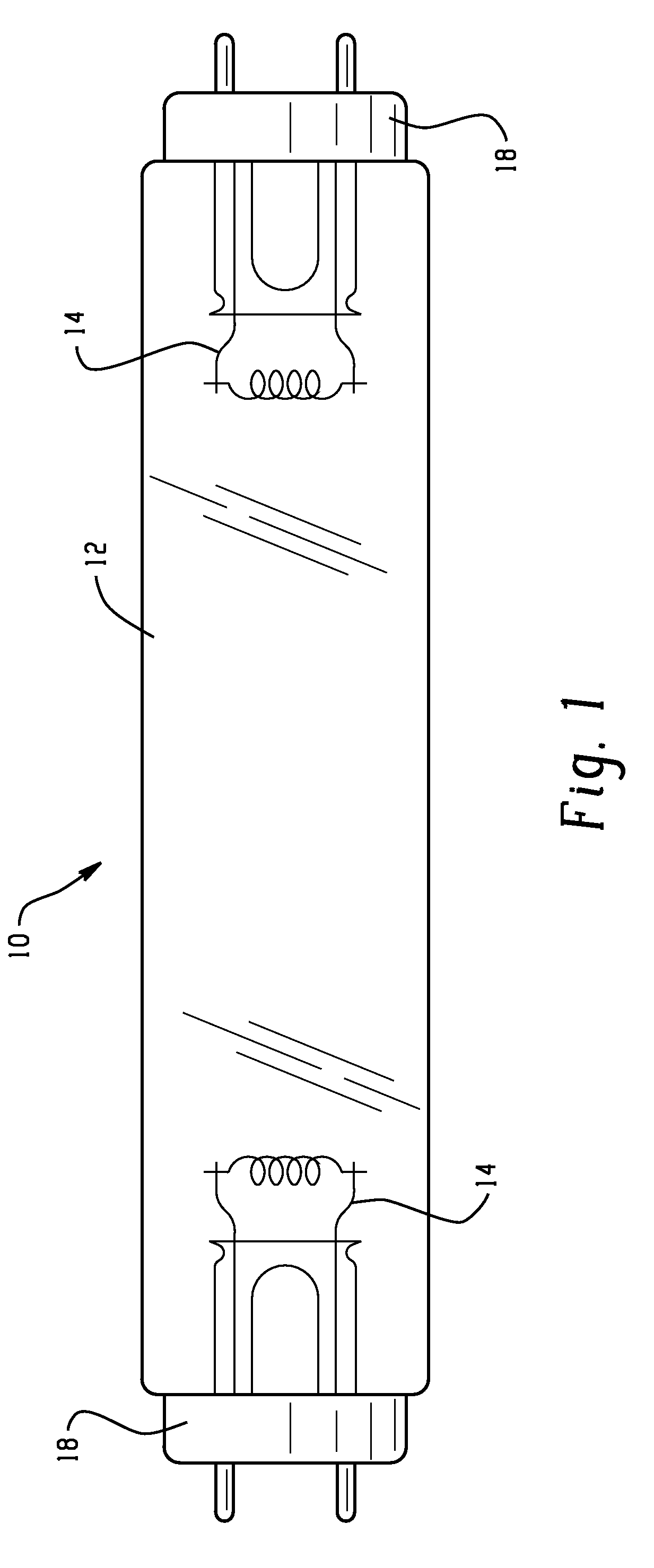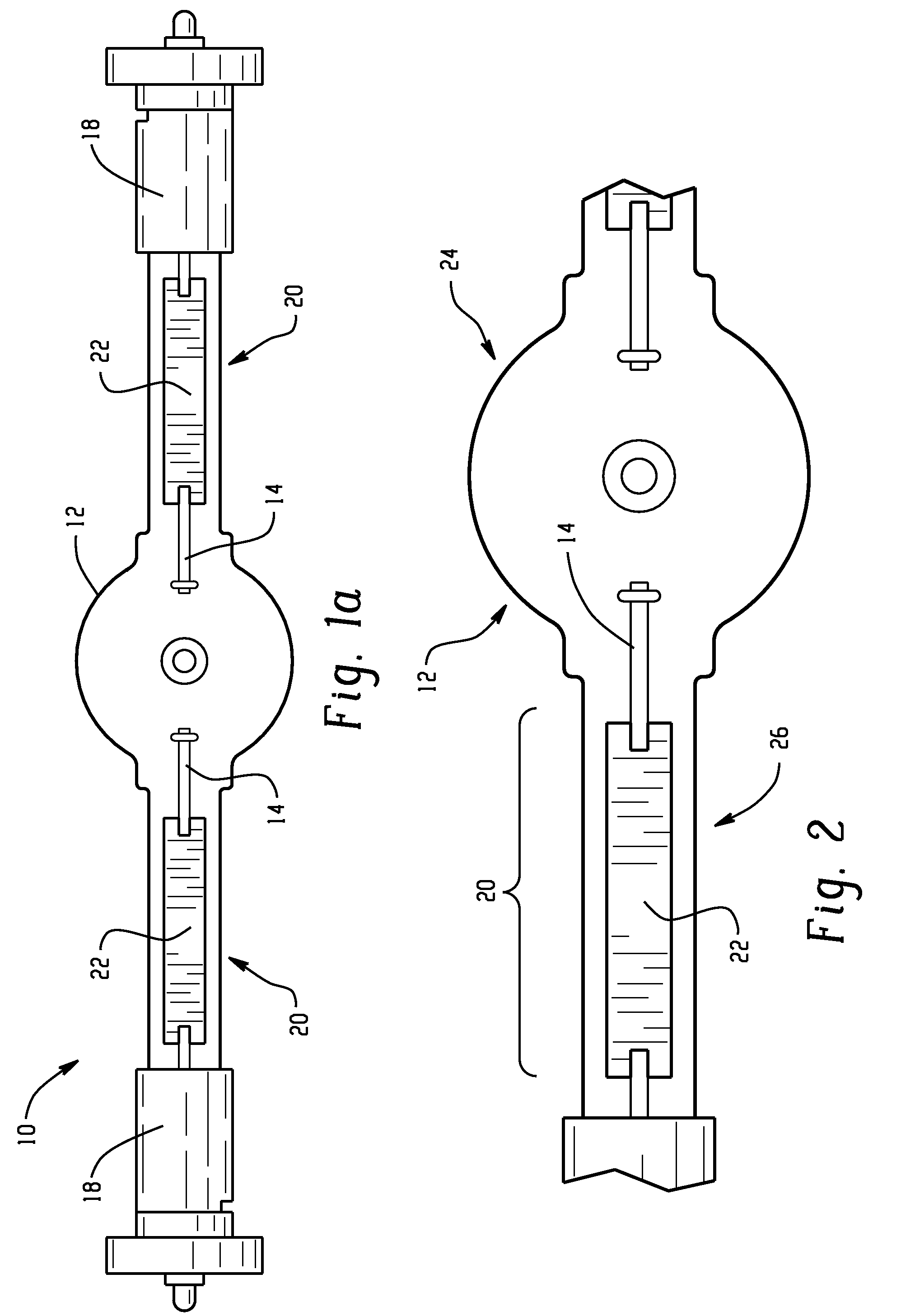Metal and oxide interface assembly to sustain high operating temperature and reduce shaling
a technology of metal oxide and interface, applied in the manufacture of electrode systems, electric discharge tubes/lamps, silicon compounds, etc., can solve the problems of compromising performance, physical structure and nature of the electrode-pin assembly, and additional stress during lamp manufacturing
- Summary
- Abstract
- Description
- Claims
- Application Information
AI Technical Summary
Benefits of technology
Problems solved by technology
Method used
Image
Examples
Embodiment Construction
[0015]The invention relates to a coating for deposition on the foil / coil in the pinch area of a discharge lamp. More specifically, the invention relates to a coating that eliminates the problems caused by thermal mismatch between the quartz envelope and the foil / coil support assembly in the pinch portion of A discharge lamp. In addition, the coating has the capability to reduce or hinder the progression of oxidation of the metal foil sufficiently to extend operating life of the lamp to the desired 1000 to 2000 hours.
[0016]With reference to FIG. 1 or FIG. 1a, there is shown a representative discharge lamp 10, which is generally known in the art. The lamp 10 has a glass tube or light-transmissive envelope 12 which has a circular cross-section, and would include the conventional electrodes 14, fill gas 16, and mercury components (not shown) known in the art. The tube 12 is hermetically sealed at both ends by bases 18. The electrodes 14 are mounted in the bases 18, such that they sustai...
PUM
| Property | Measurement | Unit |
|---|---|---|
| thickness | aaaaa | aaaaa |
| temperature | aaaaa | aaaaa |
| temperatures | aaaaa | aaaaa |
Abstract
Description
Claims
Application Information
 Login to View More
Login to View More - R&D
- Intellectual Property
- Life Sciences
- Materials
- Tech Scout
- Unparalleled Data Quality
- Higher Quality Content
- 60% Fewer Hallucinations
Browse by: Latest US Patents, China's latest patents, Technical Efficacy Thesaurus, Application Domain, Technology Topic, Popular Technical Reports.
© 2025 PatSnap. All rights reserved.Legal|Privacy policy|Modern Slavery Act Transparency Statement|Sitemap|About US| Contact US: help@patsnap.com



